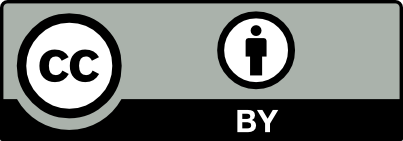Microbiological quality of home-made fish hydrolysate
DOI:
https://doi.org/10.3395/2317-269x.00273Keywords:
Hydrolyzed protein, Microorganisms, Tilapia, Refrigeration, SafetyAbstract
Hydrolyzed fish protein can be used in the nutritional treatment of individuals who have limitations in digesting intact protein and in malnourished children. The objective of this study was to determine the microbiological quality of fish hydrolysate obtained by domestic production and subjected to different periods of conservation. Fecal coliforms such as Eschericia coli, mesophilic bacteria such as Salmonella and Staphylococcus aureus, molds, and yeasts were investigated according to the “Compendium of Methods for the Microbiological Examination of Foods” and “Manual de Métodos de Análise Microbiológica de Alimentos e Água.” Fresh samples of hydrolysate from tilapia (Oreochromis niloticus) as well as samples that had been refrigerated (4°C) for 72 h as well as 1 week were analyzed. If the presence/ growth of analyzed microorganisms was detected in any sample, it meant that the quality of the hydrolysate was preserved during its preparation, it was appropriate for consumption, and its safety was guaranteed up to 1 week in refrigeration.Downloads
Downloads
Published
Issue
Section
License
Copyright (c) 2015 Health Surveillance under Debate: Society, Science & Technology (Vigilância Sanitária em Debate: Sociedade, Ciência & Tecnología) – “Visa em Debate”

This work is licensed under a Creative Commons Attribution-NonCommercial-NoDerivatives 4.0 International License.
COPYRIGHT ALLOWANCE The author (s) hereinafter designated as the ASSIGNOR hereby assign and transfer, free of charge, the ownership of the copyrights related to this ARTICLE to the Vigilância Sanitária em Debate: Sociedade, Ciência & Tecnologia (Health Surveillance under Debate: Society, Science & Technology) – Visa em Debate, represented by FUNDAÇÃO OSWALDO CRUZ, established at Av. Brasil, nº 4365, Manguinhos, Rio de Janeiro, RJ, Brazil, CEP 21045-900, under the conditions set out below: (a) The terms and conditions set forth in this Agreement shall apply to the following: 1. The ASSIGNOR declares that they s(he) is (are) the author (s) and owner (s) of the copyrighted property of the ARTICLE submitted. 2. The ASSIGNOR declares that the ARTICLE does not infringe the copyrights and / or other property rights of third parties, that the disclosure of images (if any) has been authorized and that they s(he) assume(s) full moral and / or property liability for its content, before third parties. 3. THE ASSIGNOR assigns and transfers all copyrights relating to the ARTICLE to the ASSIGNEE, especially the rights of editing, publication, translation into another language and reproduction by any process or technique. The ASSIGNEE becomes the exclusive owner of the rights related to the ARTICLE, and any reproduction, totally or partially, is prohibited in any other means of publicity, printed or electronic, without prior written authorization from the ASSIGNEE. 4. The assignment is free and, therefore, there will be no remuneration for the use of the ARTICLE by the ASSIGNEE.







